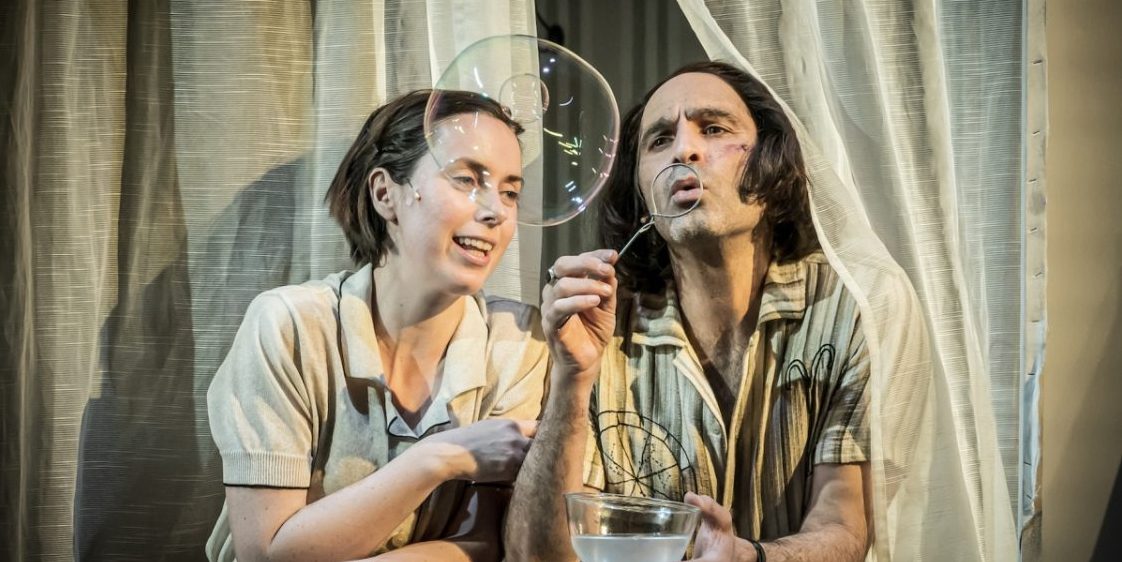This is an intriguing and brave revival of Tennessee Williams’s The Two Character Play. It is brave because like all Williams’s late plays it was savagely slated by the critics, so much so that he fled to Japan to escape the crushing insults. Even the edited version was not spared hostility. Yet, Williams referred to The Two Character Play as “my most beautiful play since Streetcar, the very heart of my life”. It is a challenging play that exposes sciophobia (fear of shadows), extreme anxieties of abandonment, loneliness, and insanity, in short, it is ‘not a conventional play’.
Williams entrusted the play’s world premiere, 1967 to James Roose-Evans, the Hampstead Theatre’s founding Artistic Director, trusting him to understand it. Sam Yates direction revisits it with aplomb.
The Two Character Play is a play within a play and the narratives in both, the frame drama and the play within the play, centre on themes drawn from the heart of Williams’s life – deep-rooted guilt about his sister and his own demons. The central autobiographical elements, which hauntingly surface in his breakthrough play The Glass Menagerie (1944), are revisited, but this time the brother and sister are isolated and abandoned in a cold theatre building. The set of two walls is moved around, exposing the rough back of the semi-room’s carcass. A detached door leading nowhere offers a false ‘escape route’ (design by Rosanna Vize).

Felice (Zubin Varla) and his sister Clare (Kate O’Flynn) are actors in a touring play titled ‘The Two Character Play’. They have been abandoned by ‘The Company’ via a note stating the two are ‘insane. The characters in The Two Character Play are also brother and sister, bearing the same names as the actors. They were brutally abandoned by their parents. The two plays orbit within each other, occasionally collide, and blur the boundaries of the two worlds. There are parallel worlds touching a myriad of emotional and psychological scars that lie deep in Williams’s head, like a heavy bubble refusing to shift or evaporate. Varla and O’Flynn skilfully and with a touch of humour, convey something of the complex neurotic tensions that each sibling is experiencing and their symbiotic dependency on each other. On stage, cameras offer an exquisite magnified close-up of facial expressions, exposing something of the characters’ inner turmoil.
Williams gives his sister the platform she was deprived of by those surrounding her in her lifetime, but all to no avail. The two are trapped and isolated in a cold world where their voices cannot be heard.
Yates’s experience in the film industry together with a remarkable application of lighting (designed by Lee Curran) and video (designed by Akhila Krishnan) help provide a glimpse into these siblings’ world. Although this production could benefit from some cuts, it still offers a great deal of food for thought.

